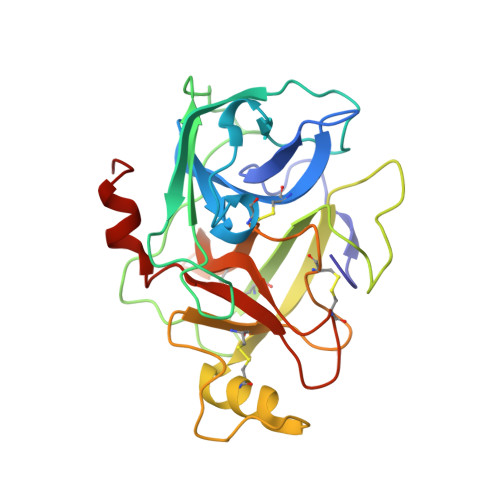Target-Directed Self-Assembly of Homodimeric Drugs Against beta-Tryptase.
Giardina, S.F., Werner, D.S., Pingle, M., Foreman, K.W., Bergstrom, D.E., Arnold, L.D., Barany, F.(2018) ACS Med Chem Lett 9: 827-831
- PubMed: 30128075
- DOI: https://doi.org/10.1021/acsmedchemlett.8b00204
- Primary Citation of Related Structures:
4MPU, 4MPV - PubMed Abstract:
Tryptase, a serine protease released from mast cells, is implicated in many allergic and inflammatory disorders. Human tryptase is a donut-shaped tetramer with the active sites facing inward forming a central pore. Bivalent ligands spanning two active sites potently inhibit this configuration, but these large compounds have poor drug-like properties. To overcome some of these challenges, we developed self-assembling molecules, called coferons, which deliver a larger compound in two parts. Using a pharmacophoric core and reversibly binding linkers to span two active sites, we have successfully produced three novel homodimeric tryptase inhibitors. Upon binding to tryptase, compounds reassembled into flexible homodimers, with significant improvements in IC 50 (0.19 ± 0.08 μM) over controls (5.50 ± 0.09 μM), and demonstrate good activity in mast cell lines. These studies provide validation for this innovative technology that is especially well-suited for the delivery of dimeric drugs to modulate intracellular macromolecular targets.
Organizational Affiliation:
Department of Microbiology and Immunology, Weill Cornell Medicine, 1300 York Avenue, Box 62, New York, New York 10065, United States.


















